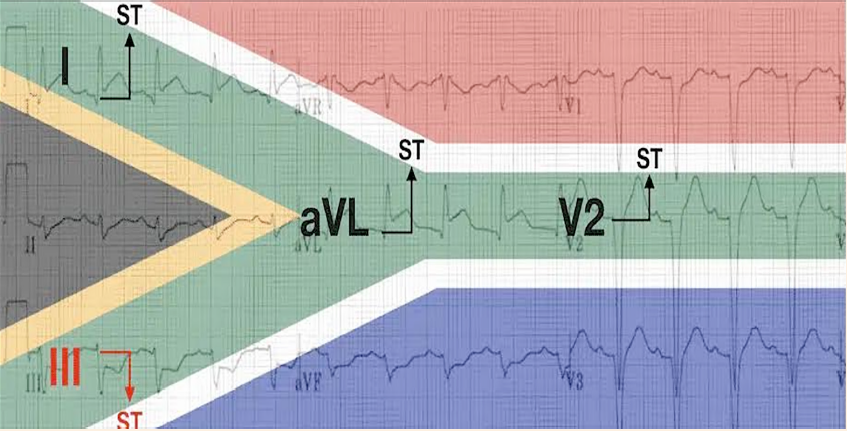Vexillology on the electrocardiogram. South Africa ́s flag sign
DOI:
https://doi.org/10.47487/apcyccv.v3i3.206Keywords:
Myocardial Infarction, Electrocardiography, Myocardial ReperfusionAbstract
The electrocardiogram (ECG) is a test that will allow making life-saving decisions. It has different patterns, and differential diagnoses, like the pattern of acute coronary syndrome with an elevation of the high lateral ST segment, which is called the sign of the flag of South Africa. We present the case of a 44-year-old patient presented with typical chest pain; the ECG showed ST-segment elevation in the DI, DII, AVL – V2, and ST depression in DIII, corresponding to an acute coronary occlusion with a compromise of the lateral segment of the heart. This ECG pattern is known as the flag sign of South Africa. The early recognition allowed the decision to perform immediately pharmacological reperfusion therapy and rescue angioplasty.
Downloads
References
(2) G Rajendran, S Mahalingam, R Kagne, B Nathan, The South African flag sign—an electrocardiographic sign to predict the culprit artery, QJM: An International Journal of Medicine, Volume 114, Issue 9, September 2021, Pages 665–666.
(3) Durant E, Singh A. Acute first diagonal artery occlusion: a characteristic pattern of ST elevation in noncontiguous leads. The American Journal of Emergency Medicine. 2015;33(9):1326.e3-1326.e5.
(4) Littmann L. South African flag sign: a teaching tool for easier ECG recognition of high lateral infarct. The American Journal of Emergency Medicine. 2016;34(1):107-109

Downloads
Published
Issue
Section
License
Copyright (c) 2022 The journal is headline of the first publication, then the author giving credit to the first publication.

This work is licensed under a Creative Commons Attribution 4.0 International License.














